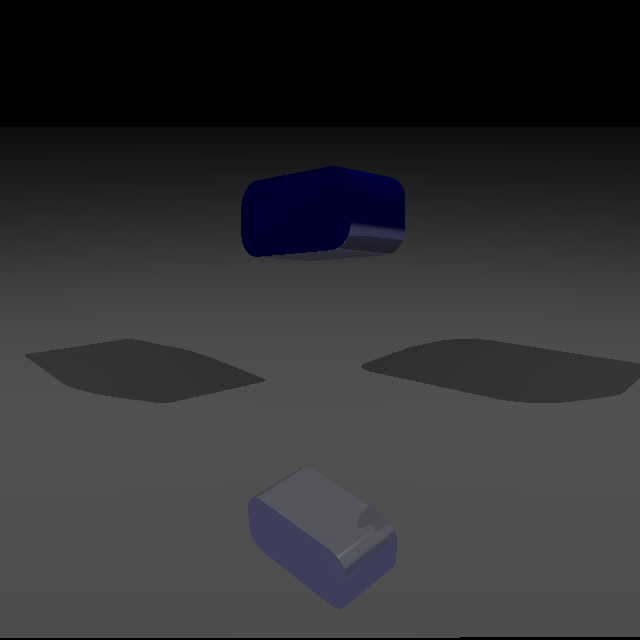nrays is an attempt to make a 3 and 4 dimensional ray tracer in Rust. It uses the ncollide library to cast rays.
The current implementation handles phong lighting and reflexions. Nothing fancy here. It supports the same geometries as ncollide, that is, plane, box, sphere, cylinder, cone, and Minkowski sum of any supported convex objects. Triangle meshes are not yet supported. Here is an example of 3d ray casting on the Minkowski sum of a cylinder and a box:
Several examples are given on the bin folder. Those are .scene files that can be read by the
loader3d executable produced by the command make test. Those scenes require some assets
originally available here. The whole set of
asset is packaged here and has to be
extracted on the bin folder. Here is an example of commands you might type the first time:
git clone --recursive git://github.com/sebcrozet/nrays.git
cd nrays
make deps
make
make test
cd bin
wget https://www.dropbox.com/s/hts81ejea7quxes/media.tar.bz2
tar xf media.tar.bz2
./loader3d crytek_sponza.scene
4d ray tracing works quite the same as 3d ray tracing except that the result is no longer a 2d image. Instead, the output of 4d ray tracing is a voxel grid. Here is an example of 4d ray casting on a hypercube, hypersphere, hypercone and hypercylinder:
The voxel grid is visualized with ParaView and uses false colors and transparency to render the volumes. To visualize this scene yourself, the data file is available here and ParaView should import the file as a Raw (binary) file and use the following settings:
- Data Extents: 0, 99 (for the three extents)
- Data Scalar Type: float
- Data Byte Order: LittleEndian
Then, visualize the scene using the "Volume" rendering mode.
The more reddish a voxel is, the more bright it is (due to a 4-dimensional light). Reflexions are activated but not visible on this screenshot. If you rotate the grid in ParaView, you will see a small cylinder inside of the ball.
Here is a screenshot of the properties dialog box:
Note that this scene is obtained using an orthographic projection, with the eye pointing toward the fourth axis. Thus, since the fourth dimension collapses into the 3d hyperplane, the (not rotated) objects appear in a natural form.
Some interesting informations about 4-dimensional rendering:


